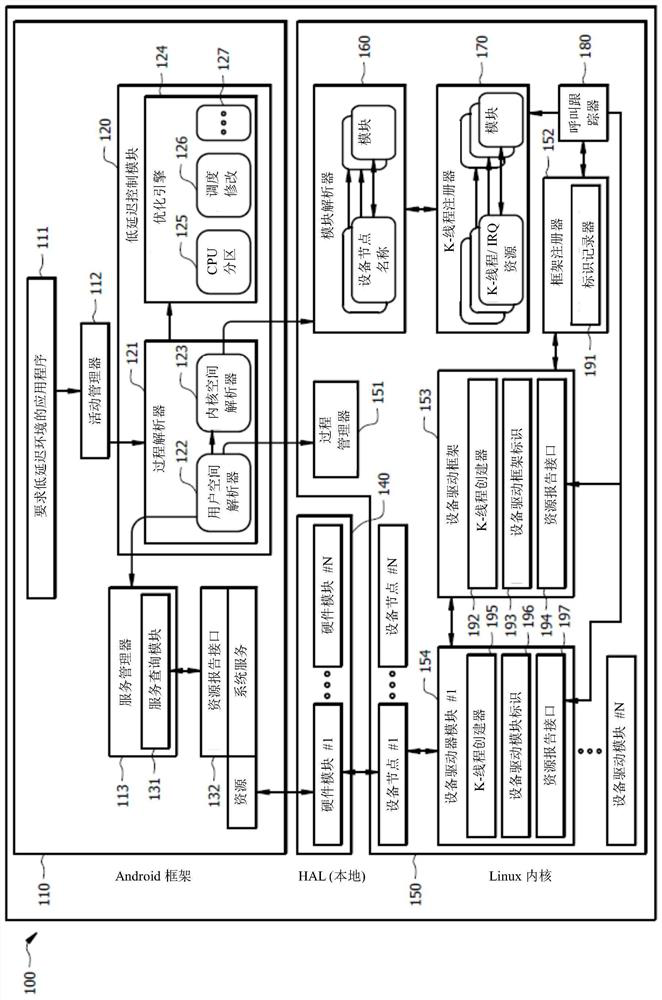Systems and methods for dynamic low latency optimization
A low-latency, user-space technology, applied in multi-program devices, program control design, instruments, etc., can solve problems such as blocking understanding, inability to return, user space low-latency technology is not optimized, etc., to achieve low-latency optimization Effect
- Summary
- Abstract
- Description
- Claims
- Application Information
AI Technical Summary
Problems solved by technology
Method used
Image
Examples
Embodiment Construction
[0023] figure 1 A low-latency optimized implementation of an embodiment is shown that includes a multi-part configuration for obtaining information about services and hardware used by an application and utilizing this information to provide dynamic implementation low-latency operation. specifically, figure 1 One embodiment is shown of a processor-based system 100 (eg, a smartphone or other device with limited processing and / or other capabilities) configured to optimize low-latency execution of certain applications. figure 1 The low-latency optimized implementation configuration of the illustrated embodiment includes modules implemented in user space (eg, the exemplary ANDROID framework of the illustrated embodiment) and kernel space (eg, the Linux kernel of the illustrated embodiment). Individual ones of the modules cooperate together to obtain information about the services and hardware used by the application and provide this information to facilitate low-latency operation ...
PUM
 Login to view more
Login to view more Abstract
Description
Claims
Application Information
 Login to view more
Login to view more - R&D Engineer
- R&D Manager
- IP Professional
- Industry Leading Data Capabilities
- Powerful AI technology
- Patent DNA Extraction
Browse by: Latest US Patents, China's latest patents, Technical Efficacy Thesaurus, Application Domain, Technology Topic.
© 2024 PatSnap. All rights reserved.Legal|Privacy policy|Modern Slavery Act Transparency Statement|Sitemap



